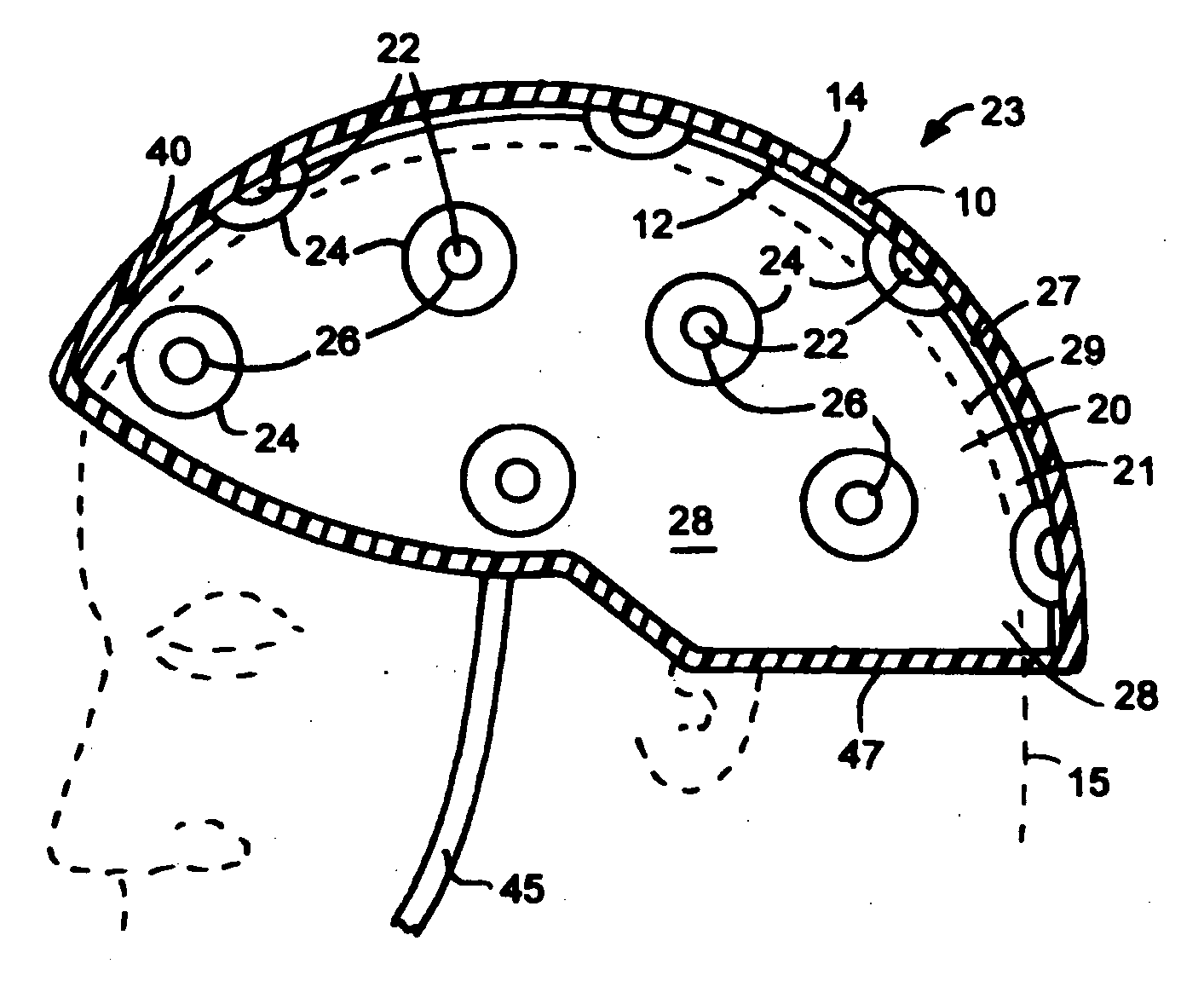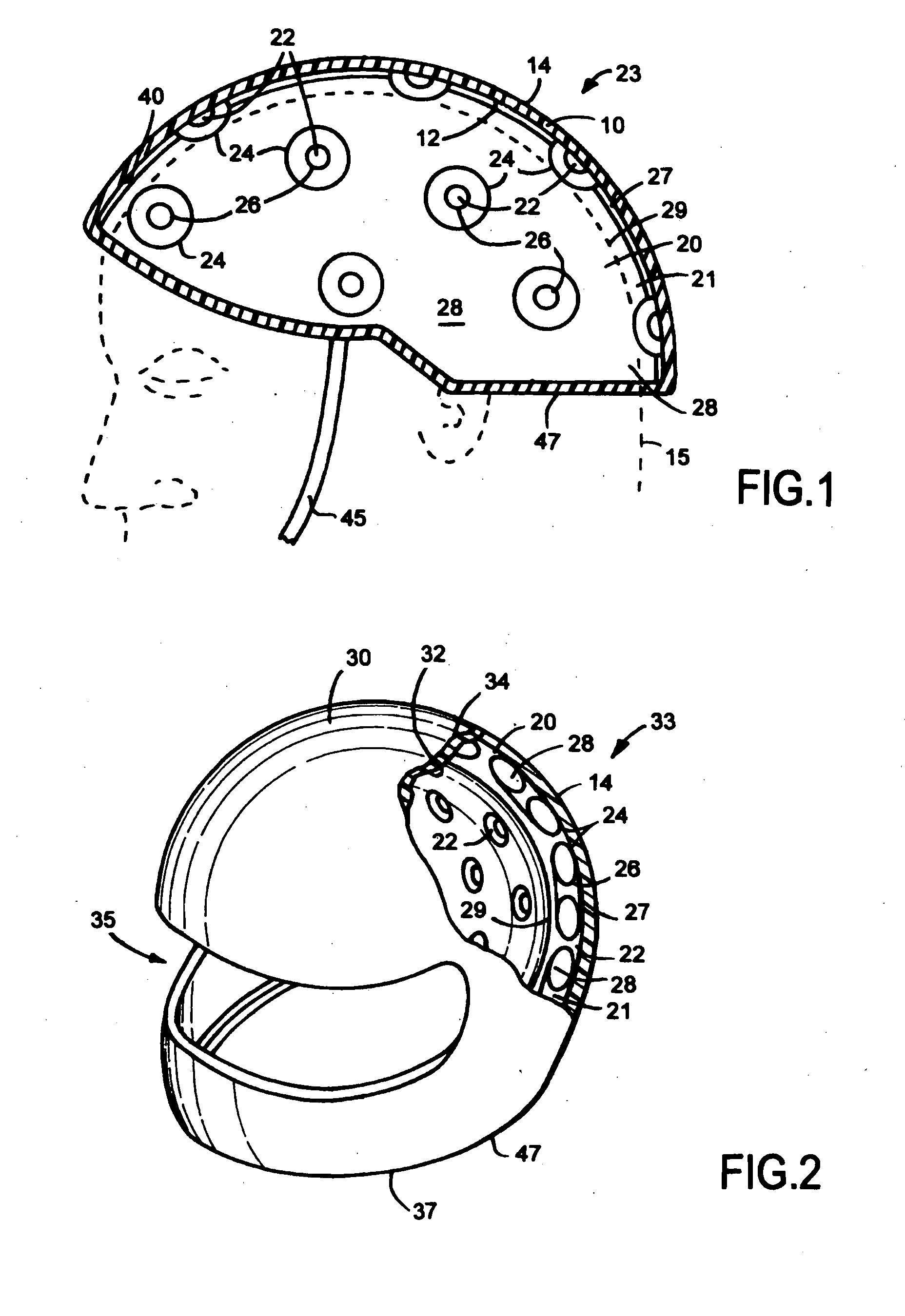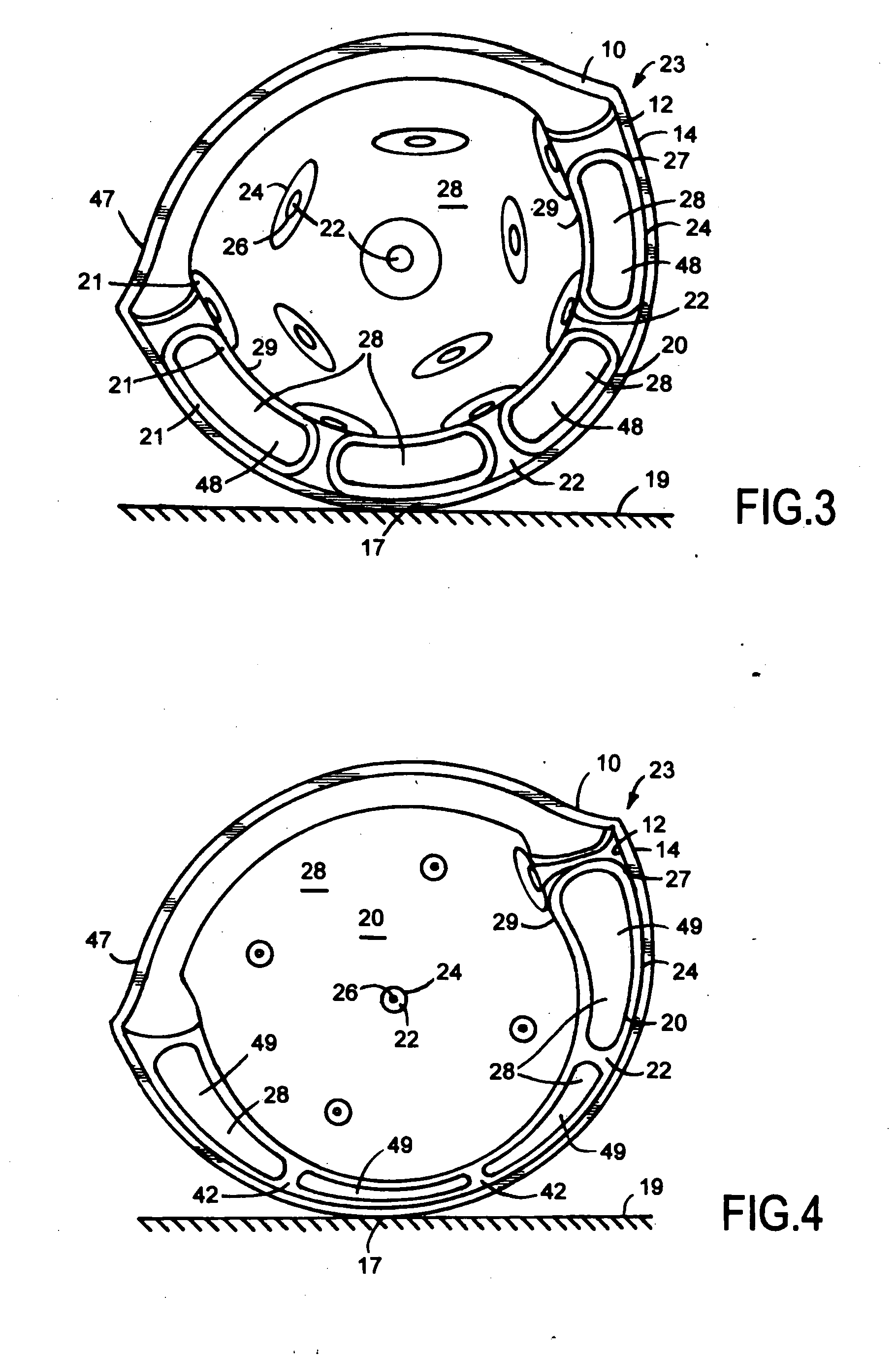Liquid-gel impact reaction liner
a reaction liner and liquid gel technology, applied in helmet covers, protective garments, helmet fastenings, etc., can solve the problems of reducing the service life of helmet foam liners, not properly decelebrating and spreading blows, and not effectively absorbing impact forces
- Summary
- Abstract
- Description
- Claims
- Application Information
AI Technical Summary
Benefits of technology
Problems solved by technology
Method used
Image
Examples
first embodiment
[0040]FIG. 1 is a cut-away side view of the invention, illustrating a helmet with liquid-gel impact reaction liner 23, of this invention. The helmet with liner 23, comprises of a helmet shell 10, with a peripheral edge 47, having a helmet inner wall 12, and a helmet outer wall 14, and a liquid-gel impact reaction liner 20. The liquid-gel impact reaction liner 20, has a gel-liner outer wall 27, and a gel-liner inner wall 29, as more clearly seen in FIG. 3. It is preferred that the liquid-gel impact reaction liner 20, is along the surface of the helmet inner wall 12. The liquid-gel impact reaction liner 20, could be form-fitted inside the helmet 10, or it could be secured to the helmet inner wall 12, via various means, such as, for example, an adhesive, a glue, an epoxy, rivets, to name a few. The liquid-gel impact reaction liner 20, has a fluid sack layer 21, containing fluid 28. The fluid sack also has a plurality of holes or openings 22, that are surrounded by a liner opening inner...
second embodiment
[0041]FIG. 2 is a perspective cut-away view of the invention, illustrating a helmet with liquid-gel impact reaction liner 33, of this invention. The helmet with liner 33, comprises of a helmet shell 30, with a peripheral edge 47, having a helmet inner wall 32, and a helmet outer wall 34, and a liquid-gel impact reaction liner 20. The liquid-gel impact reaction liner 20, has a gel-liner outer wall 27, and a gel-liner inner wall 29, as more clearly seen in FIG. 3. It is preferred that the liquid-gel impact reaction liner 20, is along the surface of the helmet inner wall 32. The liquid-gel impact reaction liner 20, could be form-fitted inside the helmet 30, and / or it could be secured to the helmet inner wall 32, via various means, such as, for example, a silicone, an adhesive, a glue, an epoxy, rivets, to name a few. The liquid-gel impact reaction liner 20, has a fluid sack layer 21, containing fluid 28. The fluid sack also has a plurality of holes or openings 22, that are surrounded b...
third embodiment
[0044]FIG. 5 is a cross-sectional cut-away view of the inventive helmet with liquid-gel impact reaction liner 53, illustrating a helmet shell 50, with a liquid-gel impact reaction liner 20, and at least one intermediate layer 55. The inventive helmet shell 50, has an inner shell wall 52, and an outer shell wall 54. The at least one intermediate layer 55, has an outer wall 57, and an inner wall 59. For some applications the inner shell wall 52, of the helmet 50, is secured to at least a portion of the outer wall 57, of the intermediate layer 55. The gel-liner outer wall 27, of the liquid-gel impact reaction liner 20, is then preferably secured to at least a portion of the inner wall 59, of the intermediate layer 55, via at least one layer of a securing means 40. It should be understood that the securing means 40, could be between the helmet shell 50, and the intermediate layer 55, (not shown) and / or between the intermediate layer 55, and the liquid-gel impact reaction liner 20, as sh...
PUM
 Login to View More
Login to View More Abstract
Description
Claims
Application Information
 Login to View More
Login to View More - R&D
- Intellectual Property
- Life Sciences
- Materials
- Tech Scout
- Unparalleled Data Quality
- Higher Quality Content
- 60% Fewer Hallucinations
Browse by: Latest US Patents, China's latest patents, Technical Efficacy Thesaurus, Application Domain, Technology Topic, Popular Technical Reports.
© 2025 PatSnap. All rights reserved.Legal|Privacy policy|Modern Slavery Act Transparency Statement|Sitemap|About US| Contact US: help@patsnap.com



